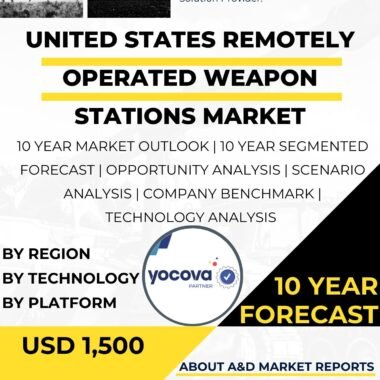Description
Japan Armored Vehicle Market
The Japan armored vehicle market has witnessed significant growth and strategic importance in recent years, driven by the nation’s focus on enhancing its defense capabilities, ensuring territorial security, and responding to evolving security challenges in the Indo-Pacific region. Armored vehicles play a critical role in modern military operations, providing protection, mobility, and firepower to defense forces in a variety of scenarios.
One of the primary applications of armored vehicles in Japan is in the defense sector. The Japan Ground Self-Defense Force (JGSDF) has integrated various types of armored vehicles into its fleet, significantly enhancing its ability to respond to potential security threats. These vehicles range from light armored personnel carriers (APCs) for troop transport to heavily armored main battle tanks (MBTs) for offensive and defensive operations.
The deployment of armored vehicles allows the JGSDF to maintain high levels of mobility and protection, even in challenging terrains and urban environments. The use of advanced armor technologies provides increased protection against conventional and asymmetric threats, ensuring the safety of personnel during operations.
Moreover, Japan’s commitment to indigenous defense capabilities has driven the development of domestically produced armored vehicles. Japanese defense companies have been actively engaged in research, development, and production of advanced armored vehicles tailored to Japan’s specific requirements. This collaboration between the government and the domestic defense industry fosters innovation and contributes to the growth of the domestic armored vehicle market.
In addition to the defense sector, Japan’s armored vehicle market is influenced by the country’s focus on disaster response and humanitarian assistance. Japan is prone to natural disasters, such as earthquakes, tsunamis, and typhoons, which can result in significant infrastructure damage and disruptions to transportation networks. Armored vehicles, such as disaster response trucks and engineering vehicles, play a crucial role in reaching affected areas, providing assistance, and supporting rescue and relief operations.
Furthermore, Japan’s commitment to international peacekeeping and stability operations has also driven the acquisition of specialized armored vehicles. The JGSDF has deployed armored vehicles in United Nations peacekeeping missions, contributing to stability and security in conflict-affected regions. These vehicles provide force protection and mobility for personnel in peacekeeping operations, enabling them to carry out a range of tasks, from patrolling to escorting humanitarian convoys.
The acquisition of advanced armored vehicles also aligns with Japan’s emphasis on collective security and regional defense cooperation. As part of its alliances with the United States and other regional partners, Japan participates in joint military exercises and training, which often involve the deployment and operation of armored vehicles. These collaborations strengthen Japan’s armored capabilities and contribute to regional security and stability.
Challenges in the armored vehicle market in Japan include addressing potential threats from emerging technologies and the need to adapt armored vehicles to evolving security challenges. As adversaries develop more sophisticated weaponry, including anti-tank missiles and improvised explosive devices (IEDs), Japan must continuously upgrade its armored vehicles to stay ahead of potential threats. This necessitates ongoing research and development efforts to enhance vehicle protection and survivability.
Moreover, cost considerations influence Japan’s armored vehicle procurement decisions. Developing and acquiring advanced armored vehicles can be expensive, requiring prudent budget allocation and prioritization. Japan must balance investing in cutting-edge technologies with maintaining other critical aspects of its defense capability.
Ensuring the compatibility and integration of armored vehicles with other elements of the JGSDF’s force structure is crucial for efficient and effective military operations. Standardizing equipment, communication systems, and tactics across different units requires careful planning and coordination.
In conclusion, the armored vehicle market in Japan has experienced significant growth and strategic importance, driven by the nation’s focus on enhancing its defense capabilities, ensuring territorial security, and responding to security challenges in the Indo-Pacific region. Armored vehicles play a critical role in defense operations, providing protection, mobility, and firepower to the JGSDF. The collaboration between the government and the domestic defense industry, as well as partnerships with international allies, fosters innovation and contributes to the growth of the domestic armored vehicle market. Challenges related to emerging threats, cost considerations, compatibility, and technology development must be addressed to further enhance Japan’s armored capabilities and ensure its ability to meet security challenges, contribute to disaster response efforts, and participate in international peacekeeping missions. With its strategic focus on modernizing its defense forces, Japan remains committed to leveraging advanced armored vehicles for a wide range of applications, from defense to disaster relief and peacekeeping, to ensure the security and stability of the nation and the region.




